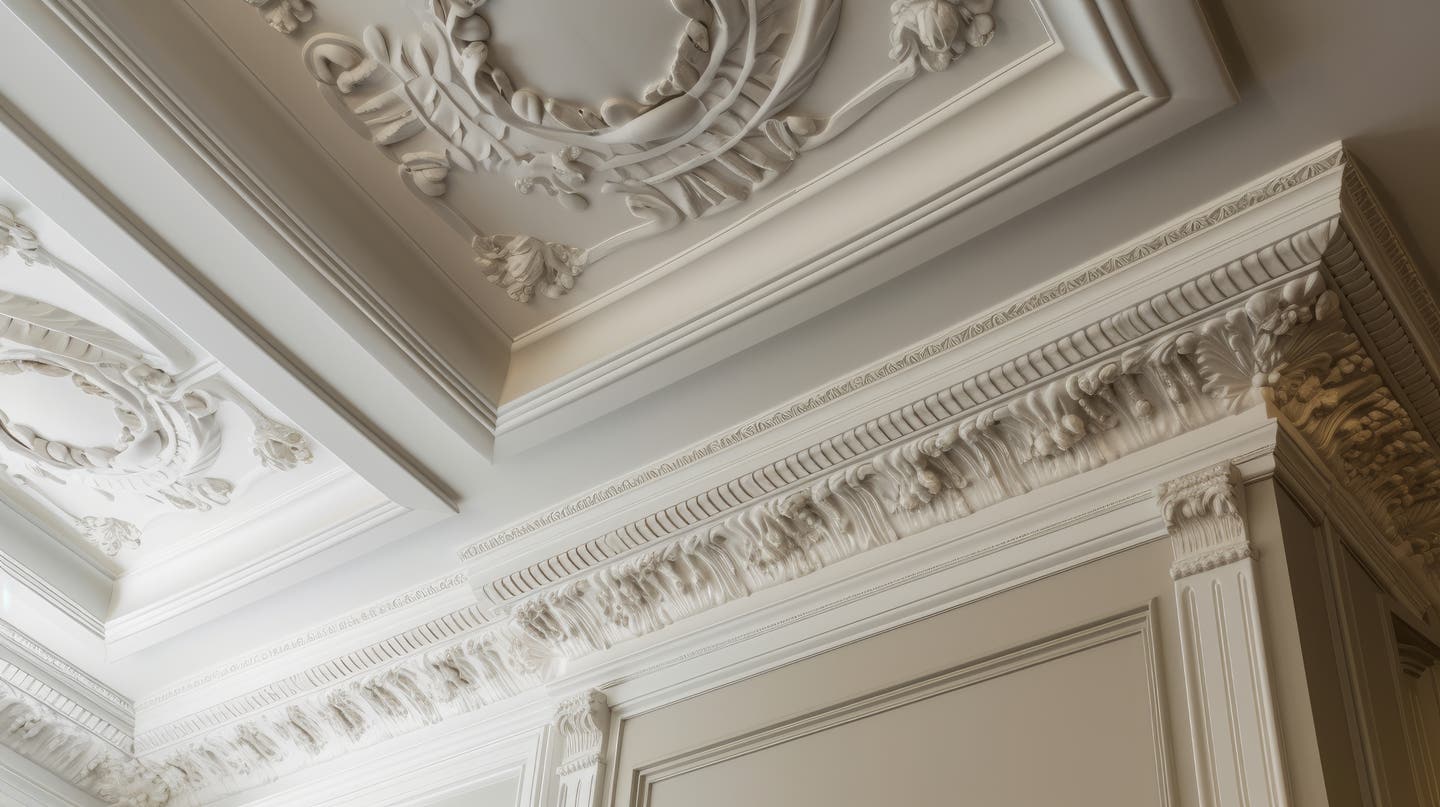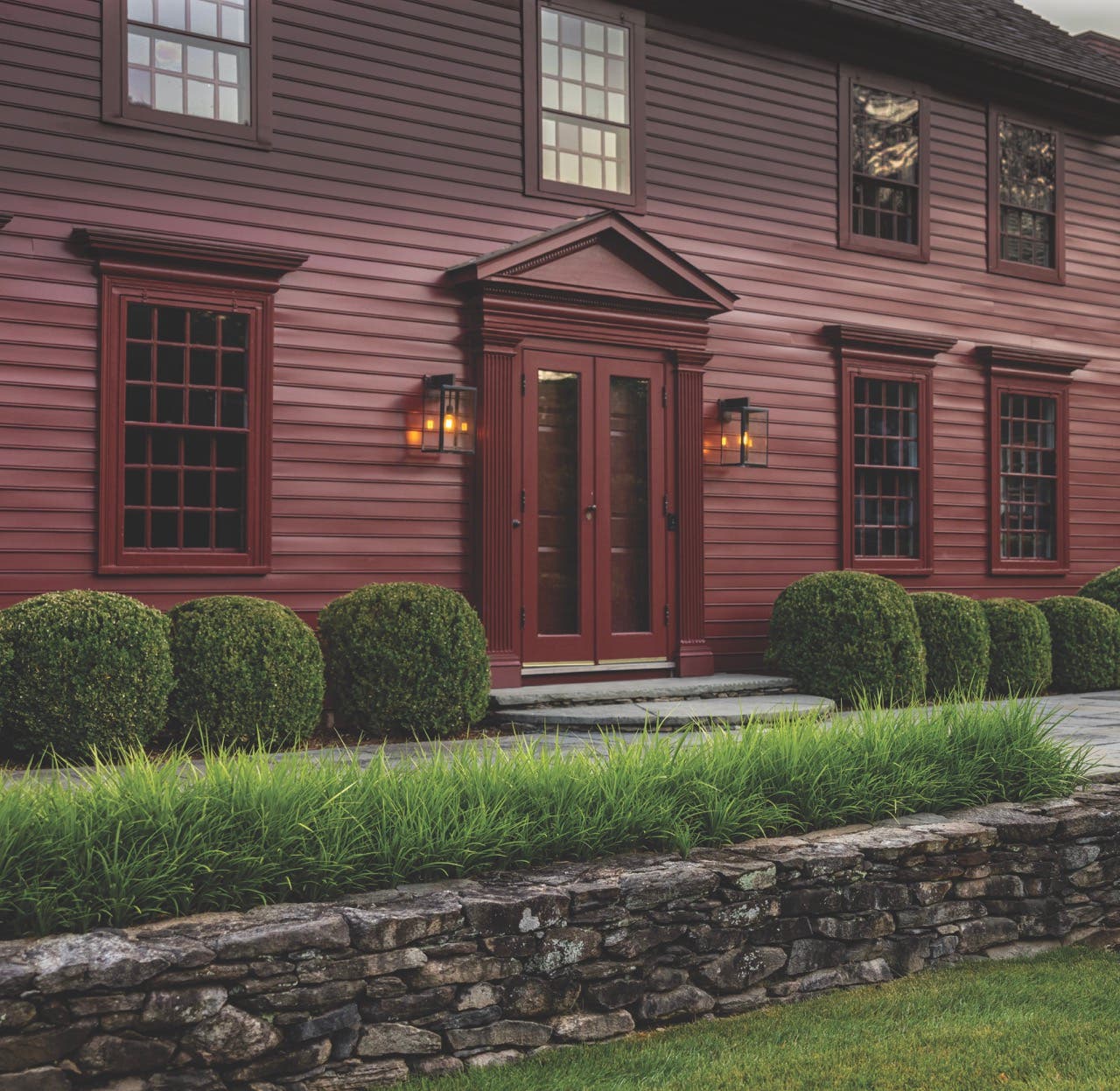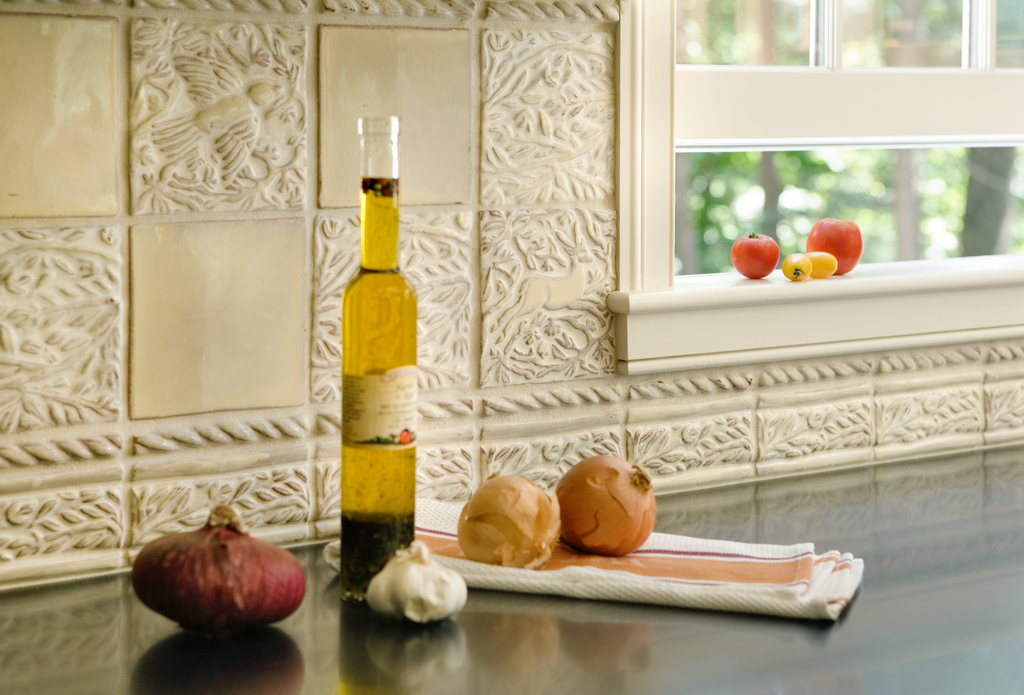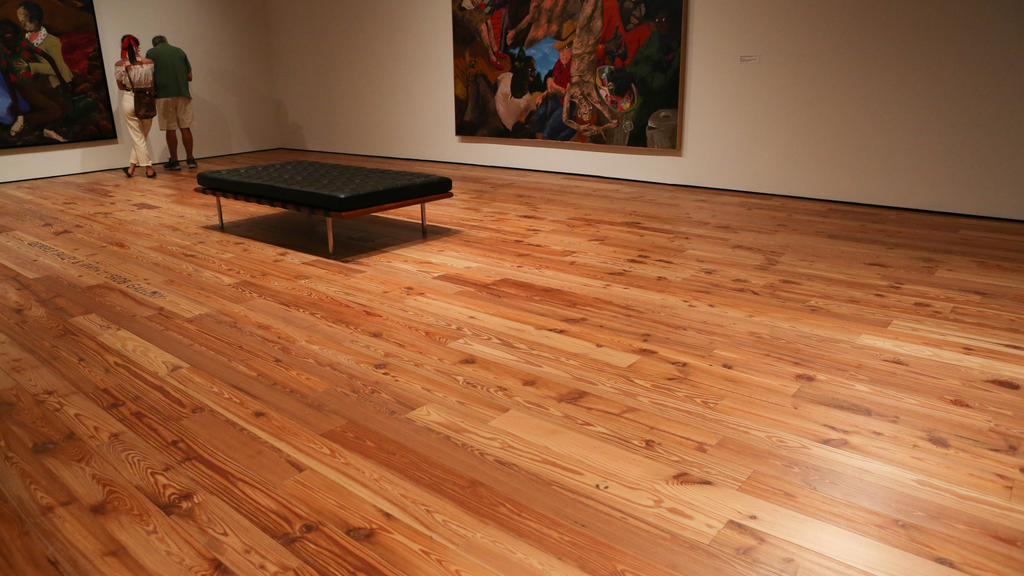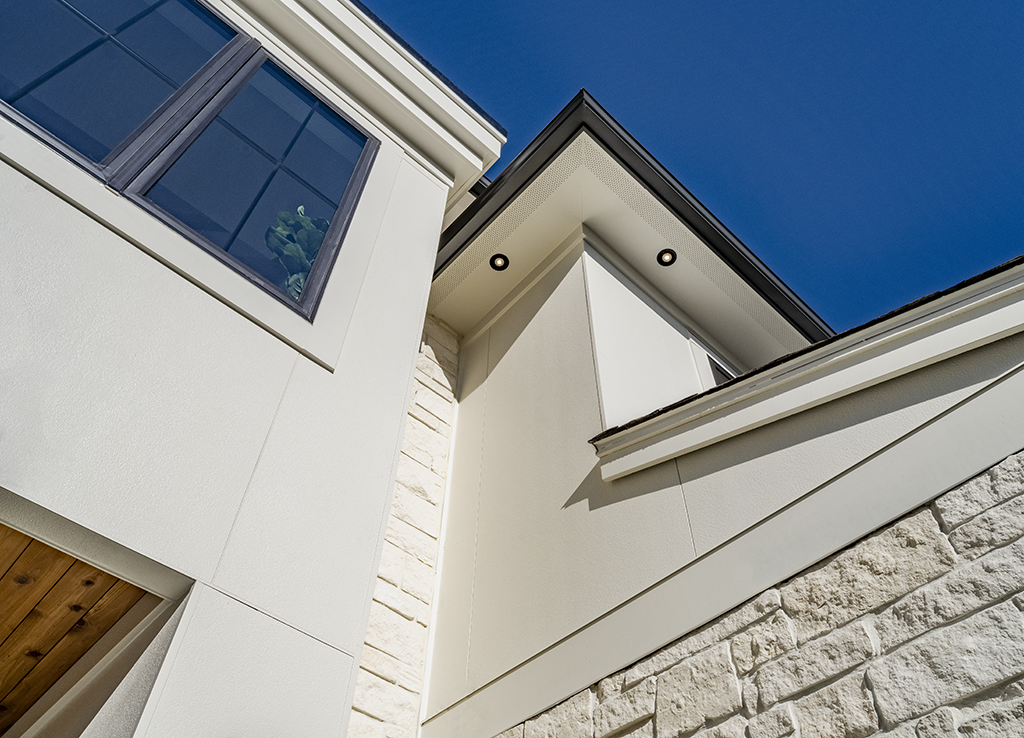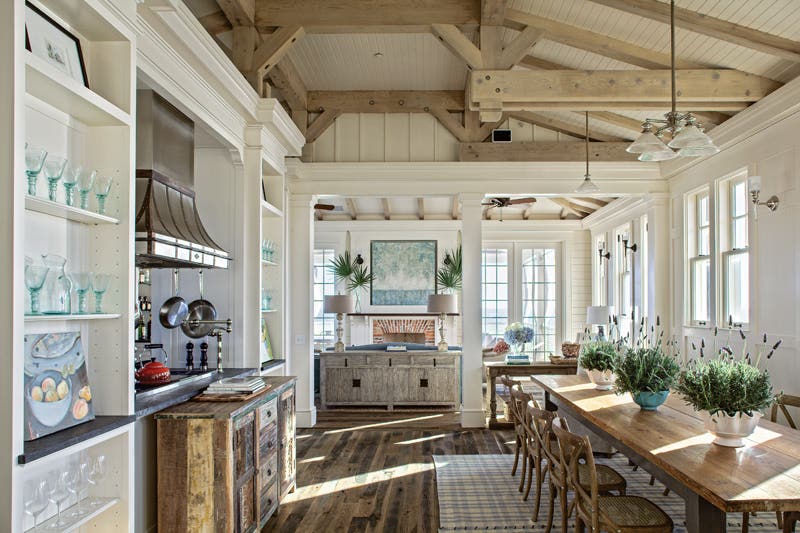
Woodwork & Reports
The Benefits of Reclaimed Wood
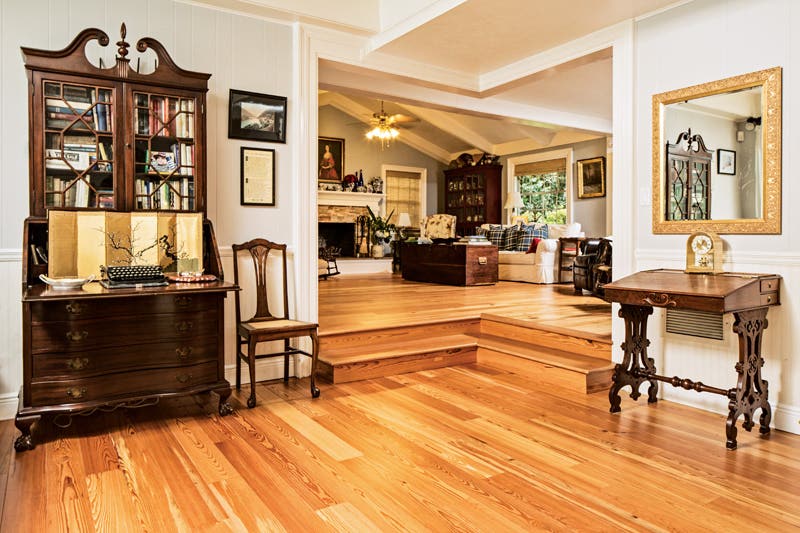

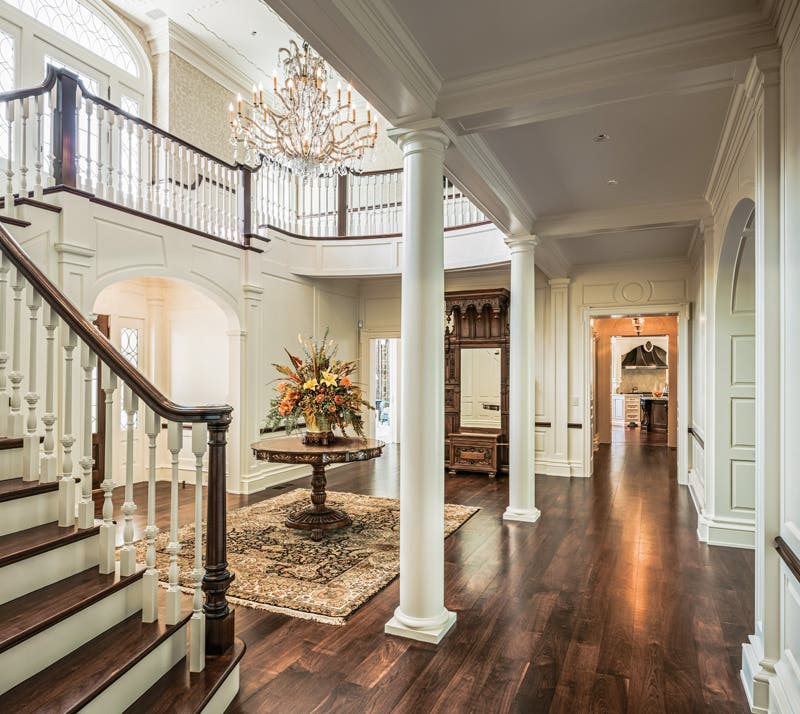
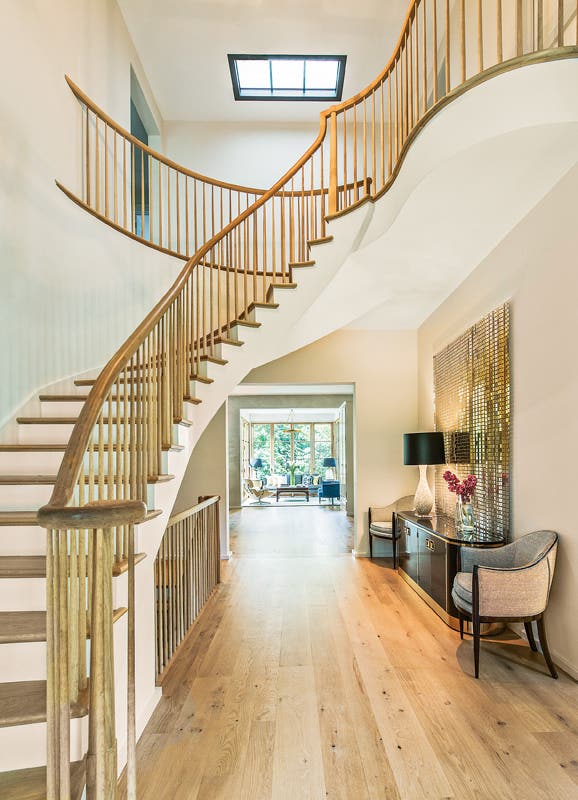
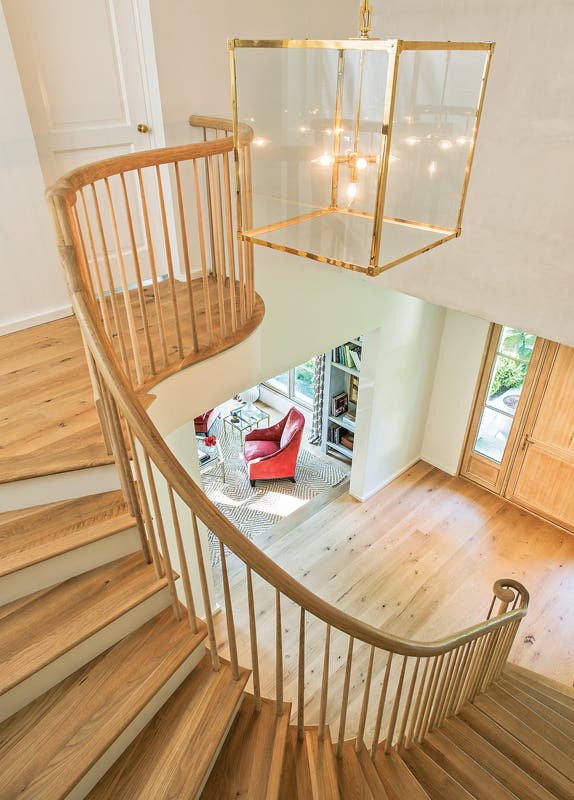


There is something culturally cosmic about generations-old wood finding new life as flooring, especially in a cyclical industry like housing. In fact, recycled or reclaimed wood is a second coming of sorts, with all-but-extinct species being resurrected for new projects and additions, while weathered or industrial boards rematerialize in the living rooms of traditional residences. So what’s at the core of flooring woods on the rebound and how they’re finished? Some experts expound.
The appeal of reclaimed wood floors has roots as varied as the materials themselves. “Trends play a big part,” says Genna Antes at Sylvan Brandt, LLC in Lititz, Pennsylvania, “so whatever beautiful pictures people see in magazines—or on Pinterest—is what they’re going to like.” She adds that the modern-mixed-with-rustic Restoration Hardware look is very popular right now and has been trendy for a while.
Carol Goodwin at the Goodwin Company in Micanopy, Florida, observes that consumers want a timeworn look and wider widths in floors more than ever before. “This trend started a few years ago when U.S. manufacturers increased their rustic, distressed looks to differentiate themselves from lower-cost imports.” Reclaimed wood offers this aesthetic in an authentic material, she says, not new wood made to look old, and since it costs one-and-a-half to three times as much as more commercially available wood flooring, it’s generally found in upscale homes. Antes adds that reclaimed wood comes close to art for the home. “If you study it, every board’s a little different and beautiful the whole way through, not a photo-finish.”
Nonetheless, flooring fashion can be fickle. “A couple of years ago, everybody wanted reclaimed wood floors in dark colors,” says Antes. “Now people want lighter floors; more of a gray or white-washed look is getting popular.” Goodwin agrees. “The gray and worn barn siding look is perhaps more an interior designer trend than a homeowner trend.” Speaking of colors, there’s evidence the green building movement has also fueled the popularity of reclaimed floors. “Millennials are the most sustainability conscious generation yet,” observes Goodwin, “and are likely to pay more for a sustainable product.” Antes notes the materials are embodied-energy conscious, “because we are reusing wood that would be demolished, and we’re not cutting down any trees.”
Reclaimed wood floors is a diverse industry dealing in often regional species that include chestnut, cypress, Douglas fir, Eastern white pine, oak, and Western red cedar. Goodwin explains that the popularity of reclaimed heart pine, one of her company’s specialties, is due in part to the extensive demand for it in the past. “It was used to build Victorian homes, hotels, and palaces all up the Eastern U.S. seaboard and across Europe,” she says. “We frequently match for repairs, renovations, and additions to these older homes, most often for flooring 2-1/2" to 3-1/4" wide.” Heart pine in vertical grain cut was often used for flooring, she explains, because it shrinks and swells even less than flat-sawn cut, “or they might have used a mix of the two grain patterns.”
Today wide plank is increasingly popular, she says, and works well when properly acclimated and installed.
Antes says her company has three products with an old, original surface: pine weatherboard, oak weatherboard, and reclaimed attic flooring. “They’ve been planed on the bottom, and have a new tongue-and-groove, but we haven’t touched the surface. On these the color and character are already present, so we recommend just sanding and applying a clear finish.” She adds that they have four resawn products cut down from old, reclaimed barn beams: oak, heart pine, white pine, and chestnut. “The regular pine weatherboard is probably the most popular product, then resawn oak, then everything else.”
Reclaimed Woods
Even so, they can make available beautiful species such as chestnut and heart pine that have been long-gone as standing timber for decades due to disease or exploitation. “River recovered woods, both virgin growth antique heart pine and sinker cypress, have always been rare,” says Goodwin, whose husband George Goodwin started pulling century-old cut logs from Florida river bottoms in the mid-1970s, “and today it is even more challenging.” Environmental regulations require that loggers provide an archeological survey of the river area to assure they do not disturb ancient sites or endangered species. There are still old mills being dismantled, says Goodwin, but it is more challenging to find quality reclaimed beams with little metal. “Today we find most have large fractures from being roughly handled.”
Antes says her products are recovered predominantly from old barn beams and siding. “When my grandfather started the business in 1960, he did all untouched building salvage—house parts, doors, windows, and floorboards—and just resold them as is.” Then she says in the 1980s, when her dad took over more duties, they started a sawmill and began re-working wood, which became the main market. “I grew up with the business, and the oak beams we get now, while still very large, are sometimes not as massive as they used to be.” However, she says people still call every week wanting to know what they can do with a barn or how they can salvage the wood.
Moreover, making reclaimed flooring is not simplified because there’s no felling of trees. “Reclaimed wood takes considerably more care to convert to products than second-growth wood,” says Goodwin, “which is readily available and can be virtually all machine-processed.” Antes says they follow the same procedure whatever their wood. “First we get all the metal out, then it goes through a drying stage.” At that point, some of the boards are going to split and crack, so then they edge these as wide as they’re still stable. “By that time, as long as the material is handled and installed properly, it’s not really going to move again.” Goodwin says for their river-recovered timber, the first step is to pressure-wash the logs to remove sand from the crevices and help the saw blades last longer. For prepping mill and warehouse beams, removing metal is also critical. “We use metal detection as one nail could ruin a $700 saw blade.”
When asked what people use reclaimed woods for, the universal response is everything—not only kitchens, bathrooms, bedrooms, and living rooms but, in the hands of many high-end customers, the entire house. Antes tells of clients who used reclaimed wood for, literally every square foot, even for paneling on featured walls and ceilings. “In the open concept trend, where living and dining areas are all one big room, people don’t want their spaces chopped up by different materials, they want it all to flow, to be the same.” She adds, “So a lot of people just pick a recycled wood they love that’s beautiful and they just want it everywhere.”
Goodwin concurs, saying that most of their reclaimed wood goes into residential projects but, beyond that, the end-users are all manner of places. “We’ve had large commercial jobs use heart pine on cubicle and conference room walls, tech companies buy heart pine floors to go with glass and steel, and scout lodges put in vintage engineered paneling to warm up the spaces.” Reclaimed wood is very often custom-specified to the building owner’s individual taste, she says. “One owner will want a brown-tone heart pine like our 5-1/4" midnight grade, while another might want 9" wide river recovered character.”
As might be expected, installing generations-old flooring has its own nuances. “Wood floors are not rocket science,” says Goodwin, “but they are wood science, and that requires a bit of expertise.” Her most important tips are to use sufficient fasteners and a proper moisture meter to determine the floorings moisture level. “Reclaimed wood is often denser than second-growth wood, and so requires a pin-type moisture meter that operates on electrical resistance.” Sit-on-top meters, she says, can be fooled by wood with varying density, such as river recovered heart pine. Antes concurs on the value of proper moisture content and letting products acclimate to the room before they are installed. “We advise four or five days to a week if you can,” she says, “especially if the house doesn’t have central air.” When products are shipped out of state or across the country, the climate is going to be much different, she explains, and without acclimating, there’s the potential for flooring to noticeably swell or shrink over the course of a year. “However, we’ve had people rush it to two or three days and still have good results.”
Choosing finishes for reclaimed floors is actually a spectrum of options that begins with nothing at all and is guided by the desired look and usage, as well as a finish industry that is responding to environmental regulations. “If the customer does not already have an opinion,” says Antes, “we usually recommend that they first consider the wood product and decide whether or not they want a stain.” Products with an old, original surface usually don’t get stained because they already have a natural color, she says, “But if you sand those products down a little, or you buy a resawn product, you might want to stain it.” A traditional finish Antes’s clients often use is three coats of oil-based polyurethane. “People who don’t like polyurethane, and just want a very natural look, often consider tung oil,” she says. (See The Finishing Touch)
Goodwin notes that finishes continue to change, and they’re all different chemicals, application rates, and drying times. “When doing a site finish, we always tell people the best finish is the one your finisher knows how to use.” She says they sell solid flooring (and their engineered floor products) not only unfinished but also factory-finished. In addition, “because there’s no such thing as a perfectly level subfloor,” they can provide flooring with a micro-bevel to accommodate any minuscule height difference board-to-board. “If it’s site-finished, you want square-edge flooring; if it’s factory-finished, you want a slight micro-bevel so that you’re able to lay the floor without having to pay for extra leveling.” Advises Goodwin, “If you’ve got a professional that knows what they’re doing, they should be able to finish a little section of floor for you to make sure you’re going to get the color, texture, and consistency you want.”
The Finishing Touch on Reclaimed Wood
One of a class of natural drying oils that, like linseed oil, form a film when exposed to oxygen, tung oil has been used for centuries in paints and inks and to create a transparent, durable, beautiful finish on woods. Modern versions for furniture and floor finishing typically modify raw tung oil to improve performance and application. “Polymerized Tung oil is basically heat-treated oil,” explains Mary Goderwis of Sutherland Welles in North Hyde Park, Vermont, “which enhances the bonds of the natural, cross-linking mechanisms, and make them even more durable.” Other examples include Waterlox Tung Oil Products, which the company says are resin modified “to form a film that is both water-resistant and elastic,” and, to a lesser degree, what are sometimes called Danish finishes that may include varnish or other oils.
What leads some people to choose a tung oil finish for a reclaimed wood floor—especially in a period house—is, depending upon the product, not only the subtle, un-varnishy appearance but also the mechanical qualities. “Tung oil has a natural affinity for oxygen; that’s how it hardens,” says Goderwis, and that can be a good match with woods that have been out in the atmosphere for 100 to 150 years. “It also marries up fine with the resin in the wood,” she says, an advantage with resinous species where other finishes may have trouble adhering. Goderwis herself works on many heart pine floors. In fact, one of her clients has been the restoration of Jefferson’s Poplar Forest, his 1806 retreat in Forest, Virginia. “They had his archive notes,” she says, “and Thomas Jefferson had actually used tung oil on his floors.”
Gordon Bock, co-author of The Vintage House (www.vintagehousebook.com), is an in-demand speaker for courses, seminars, and keynote addresses through www.gordonbock.com.




